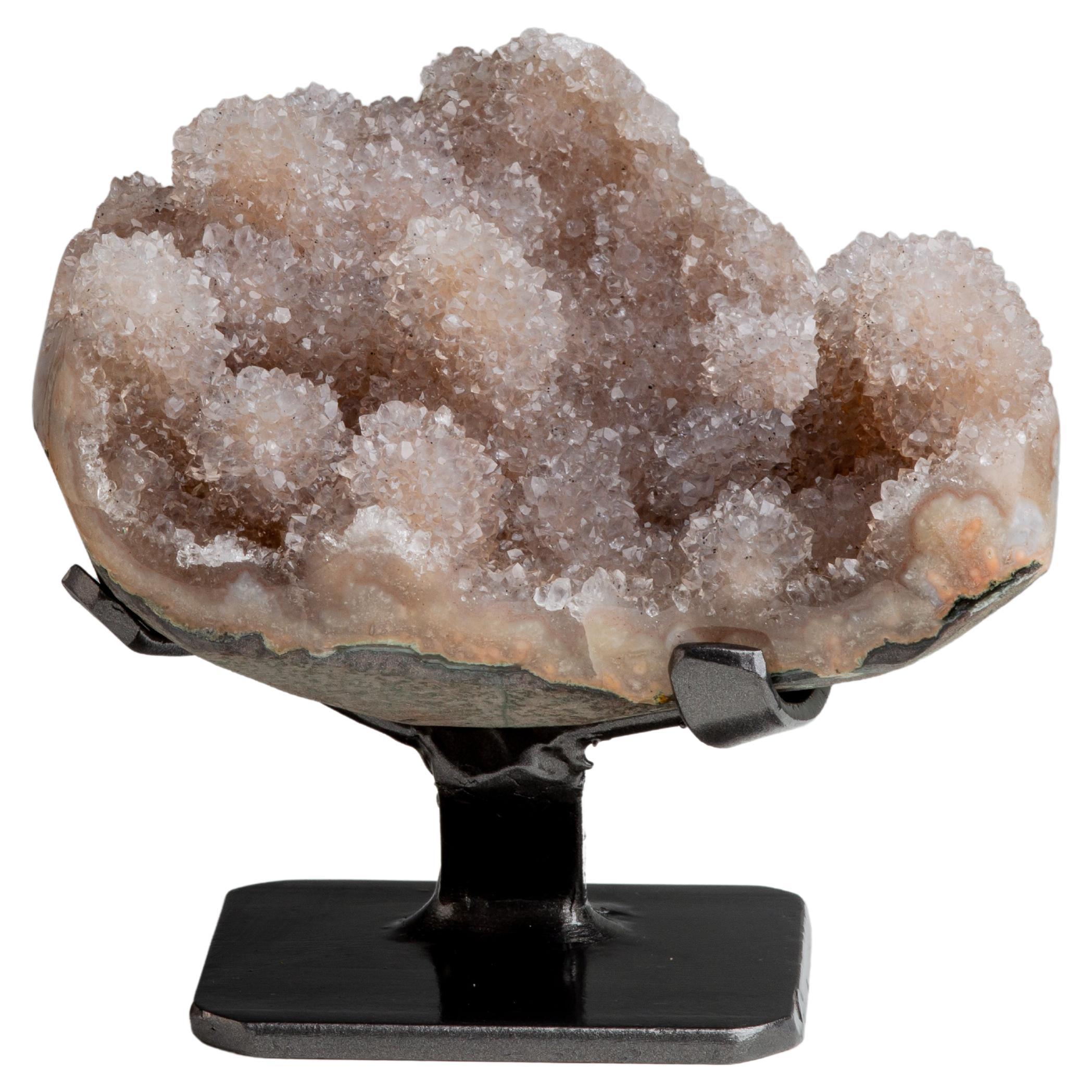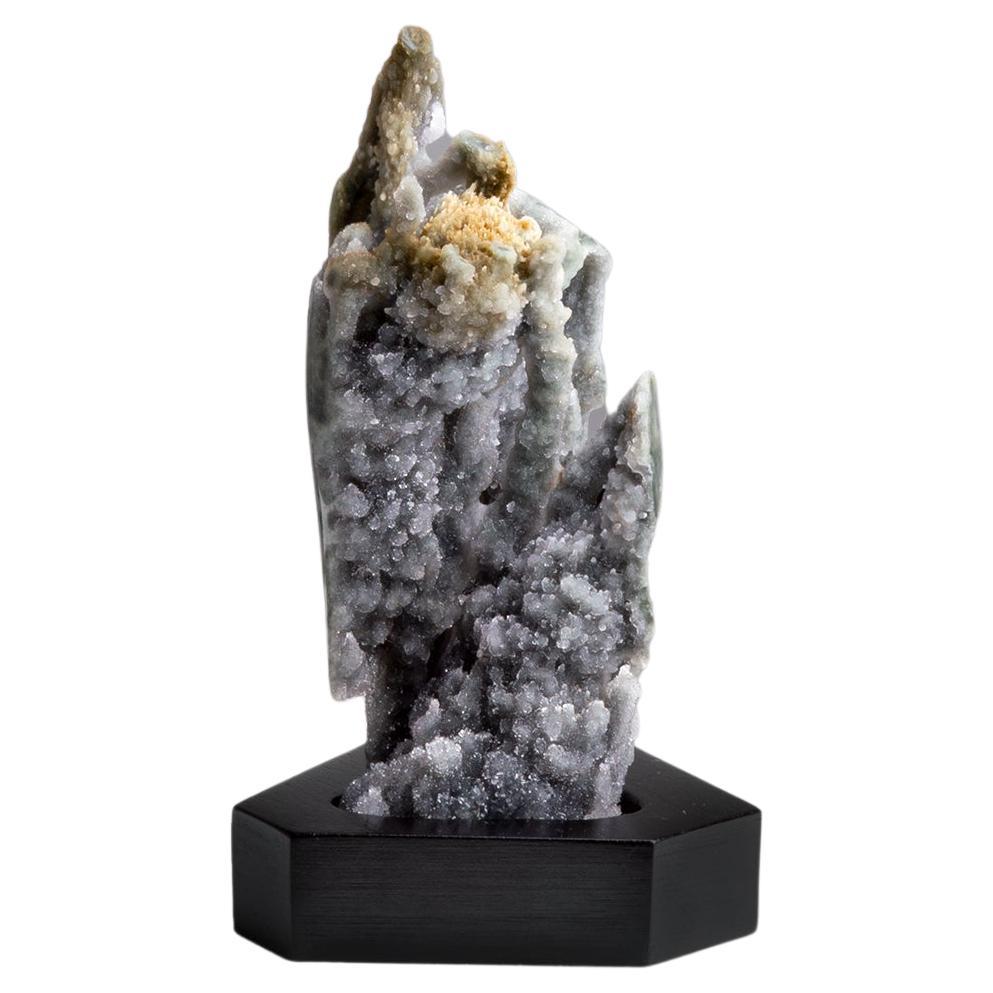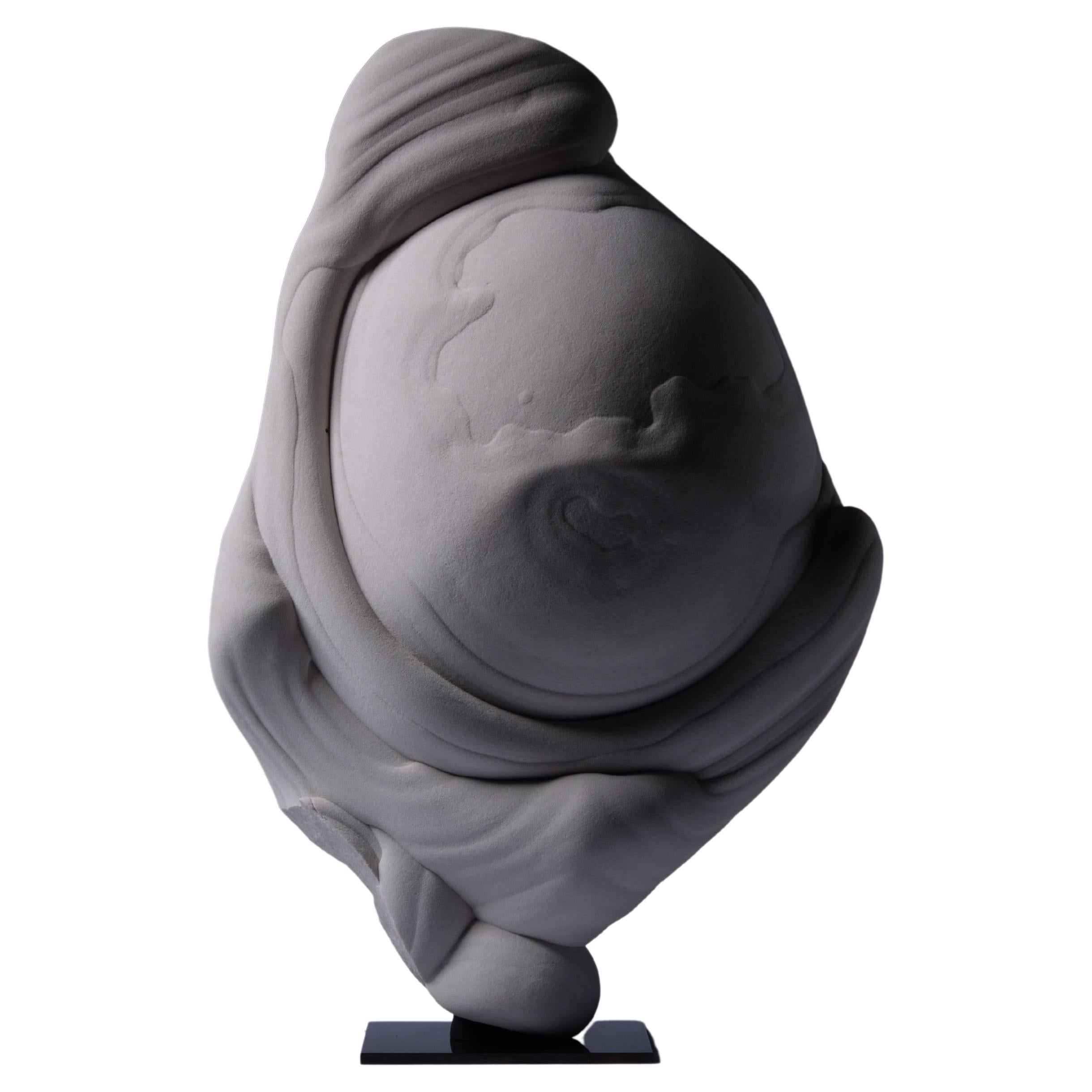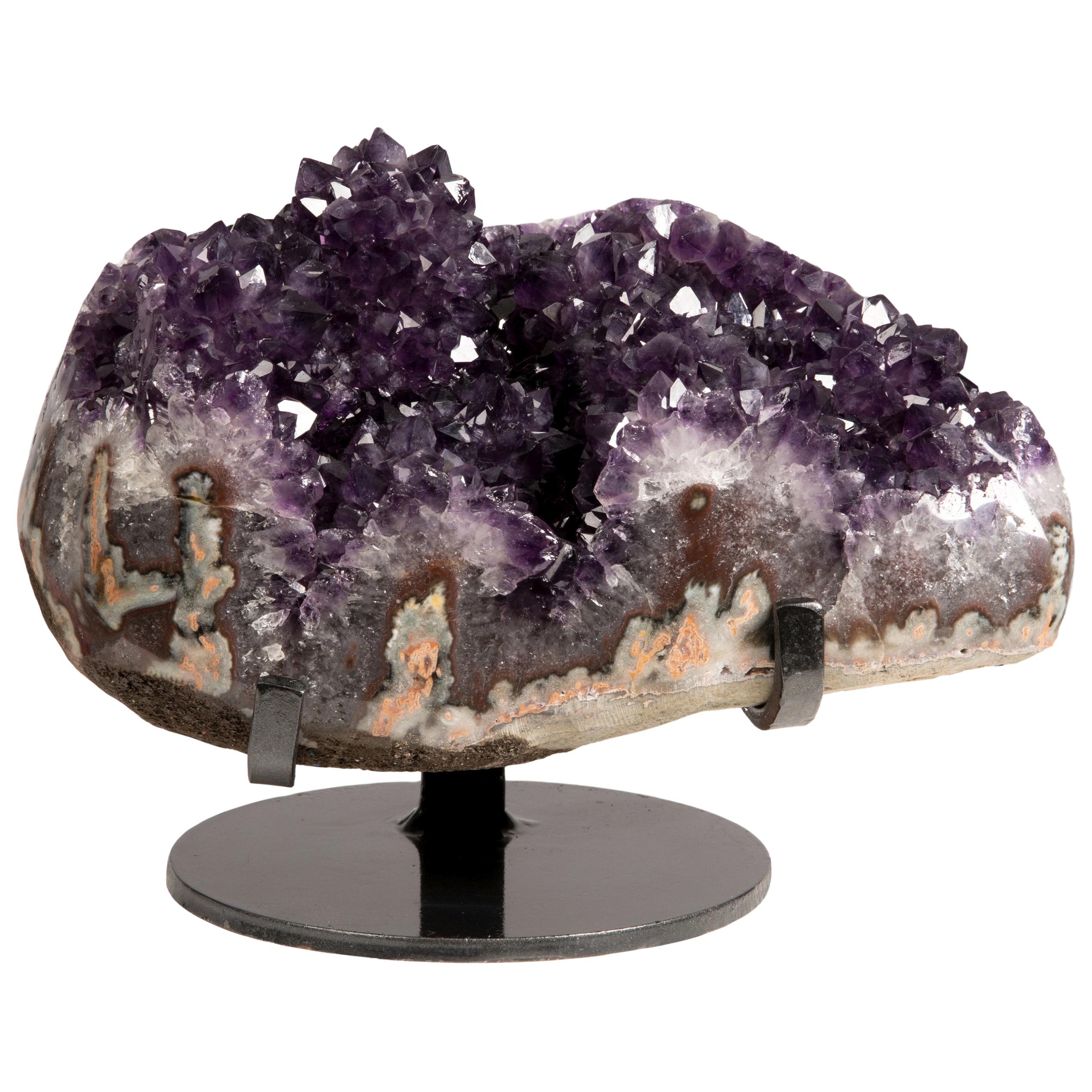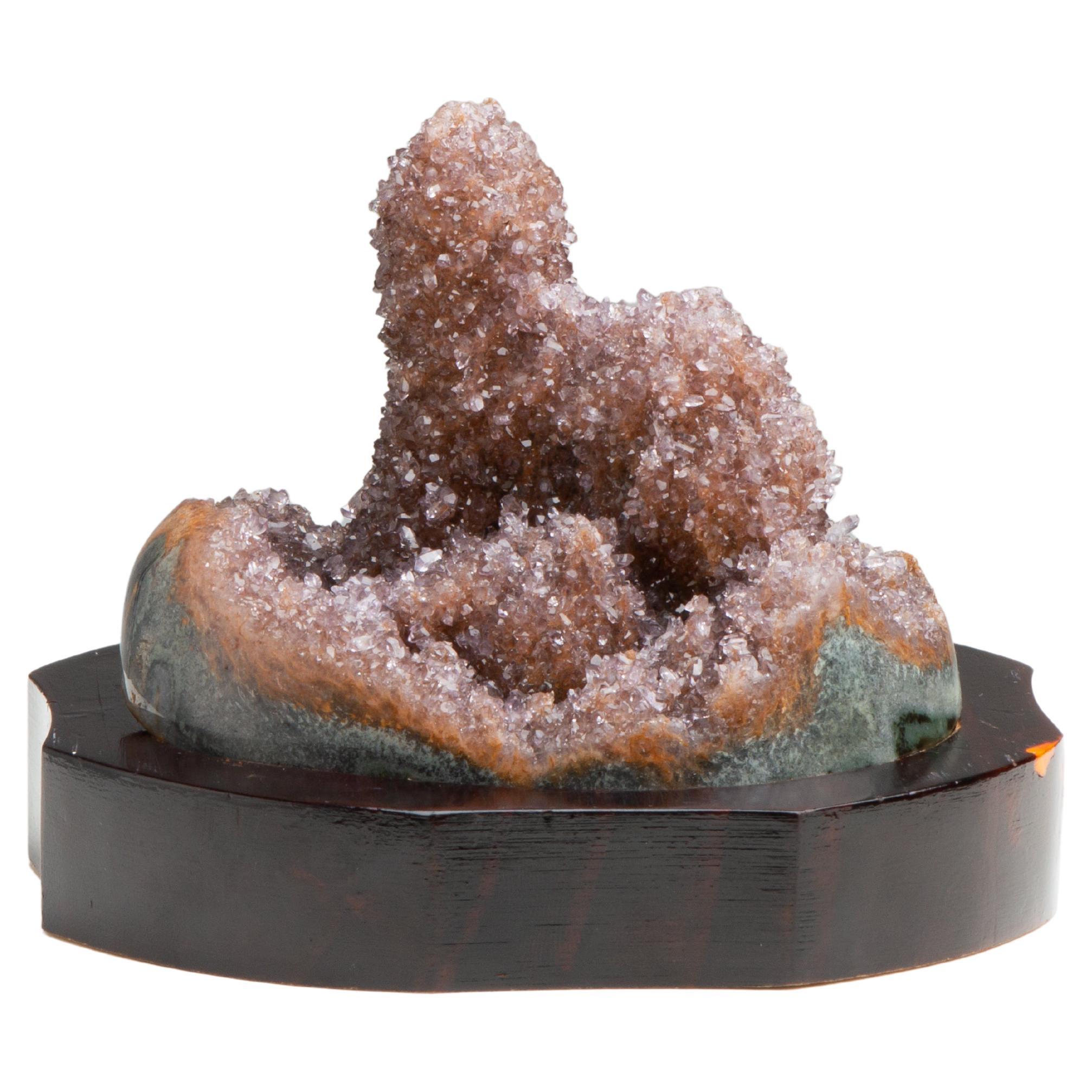Items Similar to Small floral formation
Video Loading
Want more images or videos?
Request additional images or videos from the seller
1 of 18
Small floral formation
About the Item
A small formation consisting of a white quartz stalactite on a bed on lilac
amethyst.
This piece was legally and ethically sourced directly in the prestigious mines of Uruguay, South America. Uruguayan amethyst is internationally recognised as being the finest and most aesthetic amethyst in the world, due to its intense deep purple colouration, the large size of its peaked crystals, and its durability. These crystals were formed over 120-140 million years during the Cretaceous period, and as all of our pieces are formed naturally, they are completely unique and unrepeatable natural wonders of art.
- Dimensions:Height: 5.12 in (13 cm)Width: 3.55 in (9 cm)Depth: 3.55 in (9 cm)
- Materials and Techniques:
- Place of Origin:
- Period:
- Date of Manufacture:120-140 Million Years
- Condition:
- Seller Location:London, GB
- Reference Number:

About the Seller
5.0
Vetted Seller
These experienced sellers undergo a comprehensive evaluation by our team of in-house experts.
Established in 2017
1stDibs seller since 2020
36 sales on 1stDibs
Typical response time: 1 hour
- ShippingRetrieving quote...Ships From: London, United Kingdom
- Return PolicyA return for this item may be initiated within 14 days of delivery.
More From This SellerView All
- Small Orange Tinted Druzy Quartz FormationLocated in London, GBSeveral small stalactites adorn this piece, covered in light orange druzy quartz. This piece was legally and ethically sourced directly in the prestigi...Category
Antique 15th Century and Earlier Uruguayan Natural Specimens
MaterialsAgate, Amethyst, Quartz
- Small towering grey druze stalactite formationLocated in London, GBThis small towering stalactite formation is covered in grey druze with tanbrown accents and transparent quartz overlaying green celadonite. This piece was legally and ethically sour...Category
Antique 15th Century and Earlier Uruguayan Natural Specimens
MaterialsAgate, Amethyst, Quartz
- Small Formation of Clear Quartz on Thick AgateLocated in London, GBSeveral small stalactites adorn this piece, covered in light orange druzy quartz. This piece was legally and ethically sourced directly in the prestigious mines of Uruguay, South ...Category
Antique 15th Century and Earlier Uruguayan Natural Specimens
MaterialsAgate, Amethyst, Quartz
- Small Cluster of Amethyst Stalactite Formations - Mineral Display pieceLocated in London, GBThis piece comprises a stunning example of deep purple amethyst, elegantly displayed on a metal stand, with a naturally decorative multiple stalactite formation. The polished borders of the formation allow one to appreciate the visible grey and brown agate, green celadonite and pink jasper...Category
Antique 15th Century and Earlier Uruguayan Natural Specimens
MaterialsAgate, Amethyst, Quartz
- Small Orange, Tan Druzy Quartz Stalactite Formation Resembling a Scholars RockLocated in London, GBA small piece preserving a beautiful stalactite covered in orange-tan druzy quartz. The lower edges polished to reveal a relatively thick celadonite shell. Measures: Dimensions of...Category
Antique 15th Century and Earlier Uruguayan Natural Specimens
MaterialsAgate, Amethyst, Quartz
- Smoky Quartz FormationLocated in London, GBA wonderful large formation of smokey quartz, unpolished and with all its natural lustre, the piece is wonderfully sculptural in quality. This piece was legally and ethically sou...Category
Antique 15th Century and Earlier Brazilian Natural Specimens
MaterialsQuartz
You May Also Like
- Gogotte FormationLocated in London, GBGogotte formation circa 30 Million y/o Measures : 42 x 21 x 63 cm. A magnificent example of a gogotte formation, composed of thick swirls and fo...Category
Antique 15th Century and Earlier French Natural Specimens
MaterialsSandstone
- Natural Gogotte FormationLocated in London, GBA magnificent example of a gogotte formation composed of thick swirls and folds of sparkling sandstone. Discovered in the Oligocene sand dunes of Fon...Category
Antique 15th Century and Earlier Natural Specimens
MaterialsSandstone
- Amethyst Calcite FormationLocated in London, GBAn amethyst crystal with central calcite piece.Category
Antique 15th Century and Earlier Unknown Prehistoric Natural Specimens
MaterialsAmethyst
- Natural Gogotte FormationLocated in London, GB'Louis XIV' Gogotte Formation Measures: circa 30 Million y/o 105 x 76 x 15 cm A magnificent example of a gogotte formation, nicknamed Louis XIV, composed of thick swirls and folds of sparkling sandstone. Discovered in the Oligocene sand dunes of Fontainebleau, France, formed circa 30 million years before present or later. The incredible, almost otherworldly appearance of gogottes may easily be mistaken for the work of a most talented artist. In fact, these sandstone sculptures are entirely natural in origin. They have been found in multiple locations but those from Fontainebleau, such as the present example, are the most remarkable. Thirty-five million years ago, a sea covered what is now the forest of Fontainebleau, and dunes of exceptionally fine and homogenous sand formed. As silica-rich water filtered through this sand, it turned into stone. The flow of water finely modelled the sandstone into the forms we now know as gogottes. These are rare and are only found sporadically, several metres buried underground. They owe their sparkling white appearance to the extreme and unmatched purity of the Fontainebleau sand, sometimes reaching a composition of 99.9% silica. Each of them is unique – a masterpiece slowly fashioned by the hands of Nature. The name “gogotte” was coined by French geologist Claude Guillemin (1923- 1994), inspired by the children’s book series Babar the Elephant...Category
Antique 15th Century and Earlier French Natural Specimens
MaterialsSandstone
- Natural Gogotte FormationLocated in London, GBA magnificent example of a gogotte formation composed of thick swirls and folds of sparkling sandstone. Discovered in the Oligocene sand dunes of Fontainebleau, France, formed circa 30 million years before present or later. The incredible, almost otherworldly appearance of gogottes may easily be mistaken for the work of a most talented artist. In fact, these sandstone sculptures are entirely natural in origin. They have been found in multiple locations but those from Fontainebleau, such as the present example, are the most remarkable. Thirty-five million years ago, a sea covered what is now the forest of Fontainebleau, and dunes of exceptionally fine and homogenous sand formed. As silica-rich water filtered through this sand, it turned into stone. The flow of water finely modelled the sandstone into the aesthetic concretions we now know as gogottes. These are rare and are only found sporadically several metres deep into the ground. They owe their sparkling white appearance to the extreme and unmatched purity of the Fontainebleau sand, sometimes reaching a composition of 99.9% silica. Each of them is unique – a masterpiece slowly fashioned by the hands of Nature. The intriguing name of “gogotte” was coined by French geologist Claude Guillemin (1923- 1994), who was inspired by the children’s book series Babar the Elephant. In one of the books, a group of monsters called Gogottes are shown hiding behind rocks. These rocks reminded Guillemin of the sandstone concretions...Category
Antique 15th Century and Earlier Natural Specimens
MaterialsOther
- Large Natural Gogotte FormationLocated in Pease pottage, West SussexA Gogotte Formation Of natural form, dating from the Oligocene period (30 Million years ago). Beguiling natural mineral formation, they are the result of calcium carbonate binding w...Category
Antique 15th Century and Earlier French Natural Specimens
MaterialsStone
Recently Viewed
View AllMore Ways To Browse
Cameo Seashell
Turbo Imperialis
Unusual Fish Diorama
Wooly Mammoth Tusk
Blue Coral Specimen
Monumental Quartz
Megalodon Shark
Selenite Log
Uruguay Cut Stalactite
Fossil Trilobite
Giant Tridacna Clam Shell
Campo Del Cielo
Dale Rogers Sculpture
Giant Sea Turtle
Pyrite Sun
Geode Rose Quartz
Polychrome Jasper
Crazy Lace Agate
